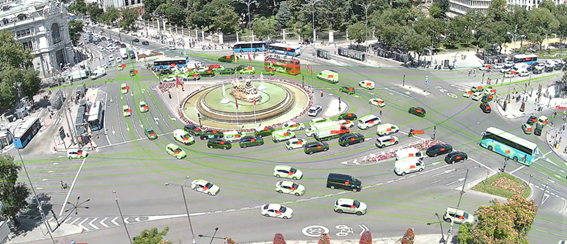With the Future Railway Mobile Communication System (FRMCS) on the horizon, rail infrastructure managers are considering whether it is appropriate to continue to invest in the current system, GSM-R (Global System for Mobile Communications-Railway). Although GSM-R is due to be replaced within a further ten years, continued investment in this system is necessary to ensure safety, efficiency and continuity of rail service.

The importance of GSM-R in the near future
GSM-R is a mature and proven technology, widely used in Europe and other parts of the world for communication between trains and control centres. Its reliability and functionality have been instrumental in improving the safety and operational efficiency of railways. Through the transmission of critical data and voice, GSM-R facilitates signalling and rail traffic control, enabling efficient management of railway networks.
Investing in GSM-R at this point remains essential for several reasons:
1. Maintenance and Upgrade: The existing GSM-R infrastructure requires regular maintenance and upgrades to continue to operate efficiently and securely until decommissioning. This includes replacing obsolete equipment and upgrading the network to meet current operational challenges.
2. Compatibility: New investments can ensure that current railway equipment remains compatible with existing communication technologies, avoiding service disruptions and guaranteeing operational continuity.
3. Transition Preparedness: Investing in GSM-R also means preparing a solid foundation for the transition to FRMCS. This includes staff training, integration of new technologies with existing ones, and migration planning.

The Future is FRMCS
FRMCS, designed from the International Union of Railways (UIC), represents the next generation of rail communication. Based on advanced mobile technologies such as 5G, FRMCS will offer higher data capacity, lower latency and greater flexibility compared to GSM-R. FRMCS has several advantages:
1. High Data Capacity: FRMCS will enable the transmission of large volumes of data, essential for advanced applications such as real-time monitoring of train and infrastructure conditions.
2. Lower Latency: The reduction in response time will improve communication in critical situations, increasing safety and operational efficiency.
3. Flexibility and Scalability: FRMCS is designed to be adaptable and scalable, allowing the integration of future technological innovations without the need for complete system revisions.

The need for a dual investment strategy
Given the criticality of GSM-R in the current situation and in the coming years and the advantages that FRMCS will offer, the investment strategy must be dual:
1. Continuous investment in GSM-R: It is vital to maintain and optimise the GSM-R infrastructure to ensure its optimal operation during its remaining lifetime. This includes investments in hardware and software upgrades, as well as training of staff to operate the current technology.
2. FRMCS readiness: In parallel, investment must be made in research, development and initial implementation of FRMCS. This involves pilot testing, standards development and collaboration with key industry players to ensure a smooth transition.
SICE TyS’ vision is that investment in GSM-R and FRMCS is by no means a duplicate expense. Keeping GSM-R fully operational ensures the safety and efficiency of today’s operation, while preparing for FRMCS positions the rail industry for a more connected and efficient future. This duality in investment is crucial to ensure a smooth transition and avoid service disruptions to ensure that the rail mode remains the backbone of collective passenger and freight transport.





